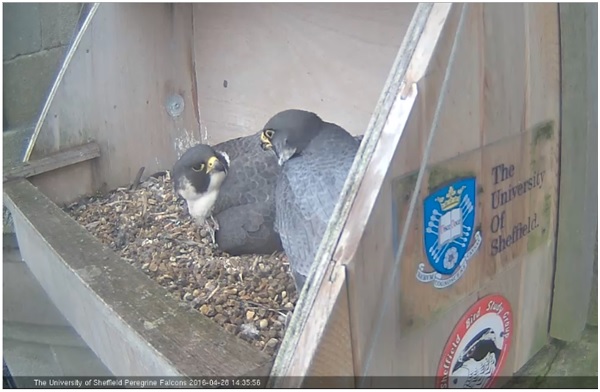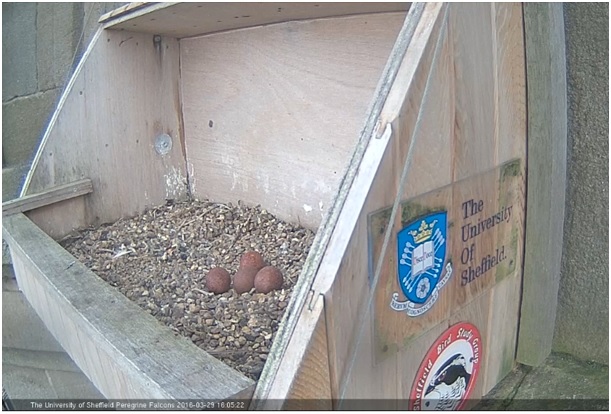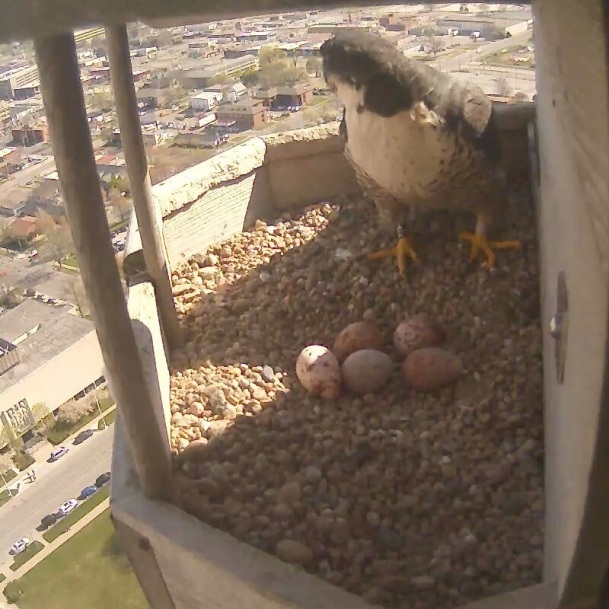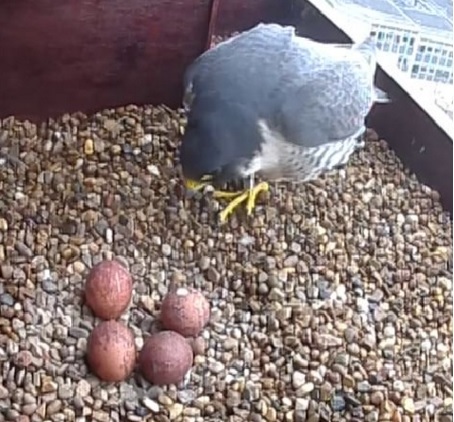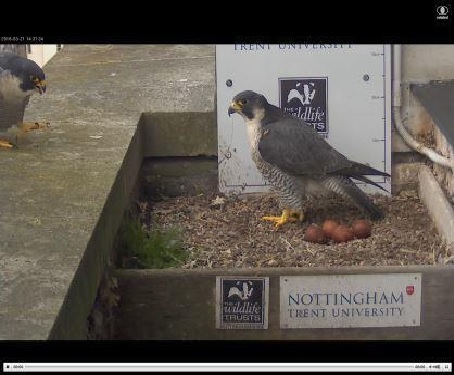This weekend marked four weeks since the clutch was complete, the fourth egg having been laid on Saturday 26th March. That means that hatching is imminent, all being well.
A recent tweet on the Sheffield Peregrines Twitter feed (thanks to Paul L for pointing it out) had a link to a terrific Dutch website that monitors Peregrine nests and makes available a spreadsheet where you can see the locations, dates of laying and dates of hatching of over 150 Peregrine nests across Europe and North America, plus a few others. The details are taken from webcams, Facebook pages and blogs, and it makes for fascinating comparisons. The site can be viewed here .
What emerges from this spread of monitored nests, almost all of which are in the northern hemisphere, is striking consistency for the date of the first egg laid in different countries: from what I can make out, the earliest first egg this year was 27th February (Brussels cathedral), then 28th February (Munich), 29th February (Rome) and at least six pairs with a first egg laid on 1st March, including pairs in Osaka (Japan), Kentucky (US), Saarbrucken (Germany) and Amsterdam. By contrast, the first egg laid by any of the 12 pairs monitored in the UK – which includes the St George’s pair – was the Nottingham pair on 14th March. This makes the UK relatively late in comparison to Belgium, Germany, Italy and the Netherlands, though not Poland, which has a similar spread of dates. However, the first egg laid of the monitored pairs in Canada was 19th April, when 2 separate pairs laid their first eggs in Edmonton. What this all suggests – with reservations about the sample size and length of the survey period – is that laying dates are earlier further south (Rome, Osaka, Kentucky, south-west Germany) and later further north (English Midlands, Minnesota and Canada).
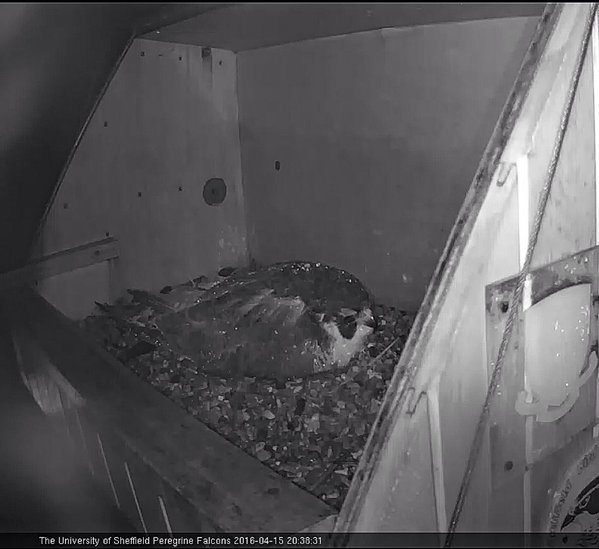
This screengrab of the Sheffield nest from 15th April – when all of the early laying pairs had already hatched their broods and the Sheffield pair was sitting tight under sleet – may indicate why that would be, and it seems obvious I suppose: the further north you go, the greater the chance of freezing temperatures at night, or even by day. The forecast for Edmonton gives a low of just 1 degree celsius tonight and last night in Sheffield saw a light snowfall…
The other feature that can be appreciated from the Dutch spreadsheet is the number of eggs per brood, though for a few it’s not immediately apparent what particular colours mean. Of the 150 pairs I’m fairly confident I understand, 22 pairs have 3 eggs (though some of these may be lost or second clutches?), 109 have 4 eggs and 13 pairs have 5 eggs. The average clutch size then is very close to 4, a marked improvement on the 3.65 cited by Ratcliffe’s 1980 study on the basis of 419 clutches in the UK. The 9% of pairs with 5 eggs also compares favourably with the 2% described by Ratcliffe. One explanation could be that Peregrines are now having better breeding success in terms of eggs laid that in the period prior to 1980 that served as the basis for Ratcliffe’s study, which would tally with the recovery from the effects of DDT that had led to the species’ dying out in many areas. Once again, however, there need to be reservations about the representativeness of the sample.
A final detail to be gleaned is that of the monitored clutches that have hatched to date in 2016 there is a range of 28-34 days between the laying of the last egg and the first hatching, with most coming 29-31 days after the clutch is complete. As estimated when the St George’s pair completed their clutch four weeks ago, we can expect hatching to begin between 26th and 28th April, so in 2-4 days’ time. Keep those eyes peeled!
I made a couple of visits this weekend, but again found the non-incubating bird generally perched up somewhere not too far away and not very active, except when a Crow ventured too close and was dive-bombed. A couple of dashing fly-bys allowed for a few shots…
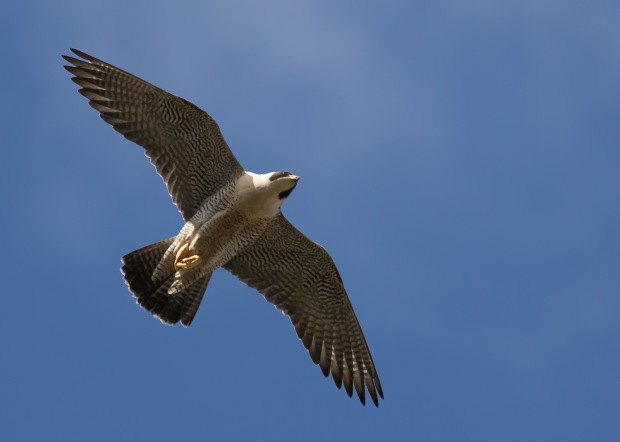
The female overhead (above)
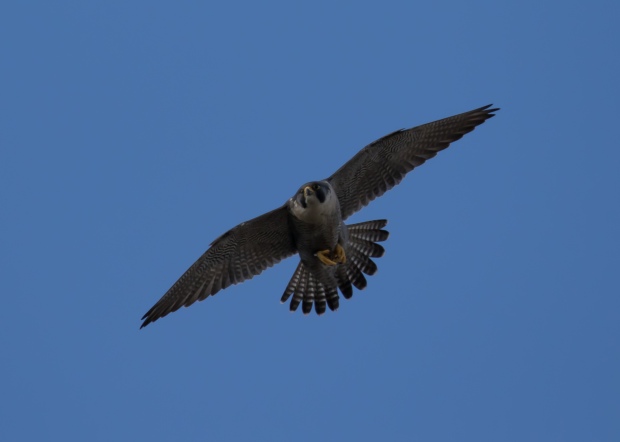
The male circling round to land on the church turrets and (below) keeping a watchful eye
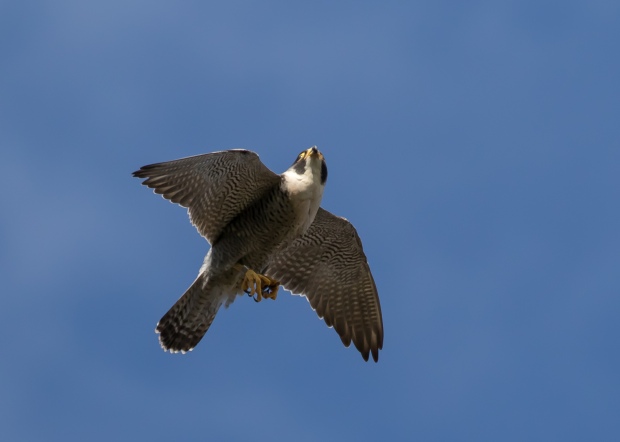
And a final snippet to end with, another of those things I’d never really thought about until reading Tim Birkhead’s book: the St George’s chicks are breathing inside the eggs. How do they do this? Air clearly passes through the shell, but water can’t and the shell also provides a highly effective barrier against microbial infection. A fantastic design that is about to demonstrate another of its key features: hard enough not to be damaged by an adult sitting/ stepping on it or pulling it in under its body with its bill, but soft enough to enable the chick to peck through it and emerge. If you keep the volume turned up on the webcam, you just might hear the chicks peeping before they break through, though you’ll be very lucky if you do! Be that as it may, the next few days should prove exciting.
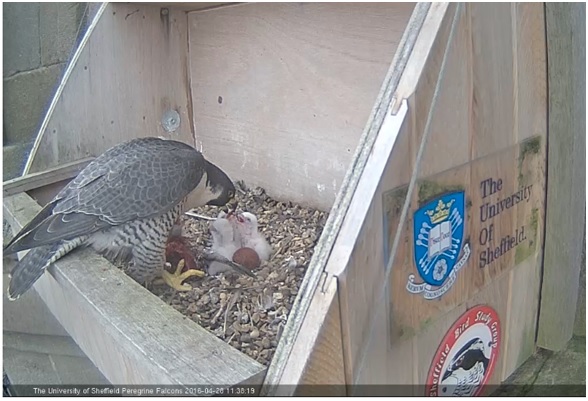
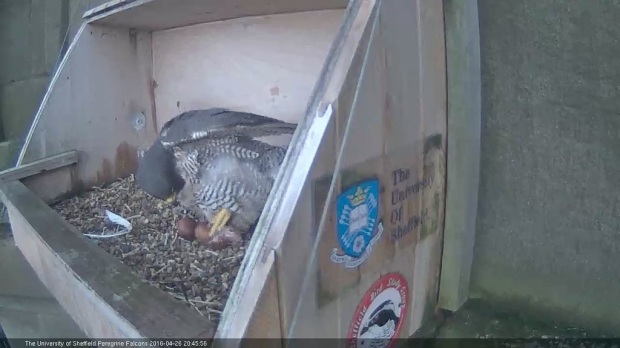
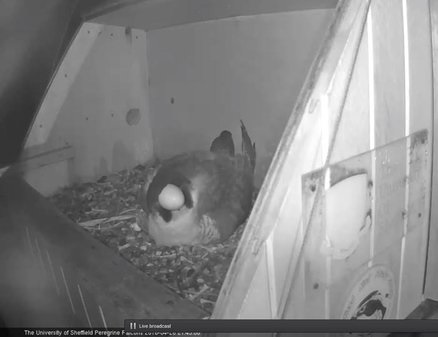
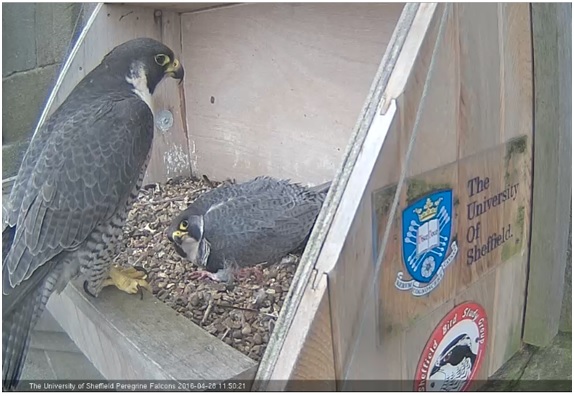 Both adults are taking turns at brooding, and neither seems keen to give up their position on the eggs on occasion, as above when the male hunkered down to indicate to the female that he didn’t plan to move. Later it was the turn of the female to stay put, staring down the male when he came into the box.
Both adults are taking turns at brooding, and neither seems keen to give up their position on the eggs on occasion, as above when the male hunkered down to indicate to the female that he didn’t plan to move. Later it was the turn of the female to stay put, staring down the male when he came into the box.